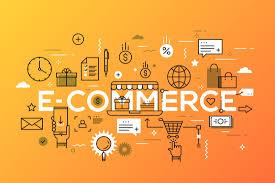
Building a Shopify store is a significant step toward establishing a successful online business. Shopify offers a user-friendly platform that simplifies e-commerce, but there are several key considerations to ensure your store is set up for long-term success. In this blog, we will explore the essential steps to building a Shopify store, including choosing the right plan, optimizing design and user experience, and integrating crucial features. Additionally, we'll touch on important factors such as payment gateways, product management, SEO, and more.
Choosing the Right Shopify Plan
Comparison of Shopify Plans
One of the first decisions you'll make when building a Shopify store is selecting the appropriate plan. Shopify offers several tiers, each with varying features and pricing structures. The Basic Shopify plan is suitable for small startups, while the Shopify and Advanced Shopify plans cater to growing businesses with more extensive needs. For larger enterprises, Shopify Plus offers advanced features and enhanced support. However, if you're still in the decision-making process, it's worth exploring Shopify alternatives to ensure that Shopify is the best fit for your business needs.
When selecting a plan, consider the features you need, such as reporting, shipping discounts, and access to third-party apps. Additionally, think about your budget and future growth. Understanding the differences between plans helps you avoid unnecessary costs and ensures that your store has the tools it needs to scale.
Factors to Consider When Selecting a Plan
While comparing plans, it’s crucial to consider the potential shopify expert price if you plan to hire professional help for your store setup or customization. Experts can provide valuable services like custom theme development, SEO optimization, and app integration, but their prices can vary widely depending on their experience and the complexity of the tasks. Therefore, it’s wise to factor in these costs when budgeting for your Shopify store.
Design and User Experience
Selecting the Right Theme for Your Store
The theme you choose for your Shopify store plays a vital role in shaping your customers’ experience. Shopify offers a wide range of free and premium themes that cater to different industries and styles. When selecting a theme, consider your brand’s identity, the user experience you want to create, and the ease of customization.
A good theme should be visually appealing, mobile-responsive, and easy to navigate. It should also support the specific features you need, such as product sliders, video integration, or advanced filtering options. Remember, your theme is the first impression your customers will have of your store, so choose wisely.
Importance of Mobile Responsiveness
With a growing number of consumers shopping on mobile devices, ensuring your Shopify store is mobile-responsive is critical. A mobile-responsive design adjusts seamlessly to different screen sizes, providing an optimal browsing experience on smartphones and tablets. This not only improves user experience but also boosts your store’s SEO, as search engines prioritize mobile-friendly sites.
Customizing Your Store’s Appearance
Customizing your Shopify store's appearance allows you to create a unique shopping experience that aligns with your brand. Shopify’s theme editor enables you to tweak your store’s design, including colors, fonts, and layouts. For more advanced customization, you may need to hire a developer, especially if you want to implement custom features or integrations. Keep in mind that the shopify expert price can vary based on the level of customization required.
Setting Up Payment Gateways
Overview of Shopify Payment Options
Setting up a reliable payment gateway is crucial for processing transactions smoothly. Shopify Payments is the default option, offering seamless integration and no transaction fees. However, depending on your target market, you may need to offer additional payment methods, such as PayPal, Apple Pay, or Google Pay.
Integrating Third-Party Payment Gateways
If you prefer to use a third-party payment gateway, Shopify supports over 100 payment providers worldwide. While third-party gateways may charge transaction fees, they can offer features tailored to specific markets or industries. When choosing a payment gateway, consider factors such as transaction fees, ease of integration, and customer support.
Considerations for International Payments
For businesses targeting global markets, offering multiple currencies and localized payment methods is essential. Shopify supports multi-currency setups, allowing customers to pay in their preferred currency. This can enhance the shopping experience and reduce cart abandonment rates.
Product Management
Organizing Product Categories and Collections
Effective product management is key to a well-organized Shopify store. Start by organizing your products into categories and collections, making it easy for customers to browse and find what they’re looking for. Shopify allows you to create automated collections based on specific criteria, such as product type, price, or tags.
Setting Up Product Descriptions and Images
Product descriptions and images are critical for converting visitors into customers. Write detailed, compelling descriptions that highlight the features and benefits of your products. Use high-quality images that showcase your products from multiple angles. Shopify also allows you to add videos and 3D models, providing a more immersive shopping experience.
Inventory Management Best Practices
Managing your inventory effectively is essential for avoiding stockouts and ensuring customer satisfaction. Shopify’s inventory management tools help you track stock levels, set up low-stock alerts, and manage suppliers. Consider integrating your Shopify store with your inventory management system to streamline operations.
SEO and Marketing Integration
Optimizing Your Shopify Store for Search Engines
Search engine optimization (SEO) is crucial for driving organic traffic to your Shopify store. Start by optimizing your product pages, collections, and blog posts with relevant keywords. Shopify offers built-in SEO features, such as customizable meta tags and URL structures. Additionally, consider using SEO apps that can help you with tasks like sitemap generation and keyword analysis.
Integrating Marketing Tools and Apps
Shopify’s app store offers a wide range of marketing tools, from email marketing apps to social media integrations. These tools can help you automate marketing campaigns, track performance, and drive traffic to your store. Consider integrating apps like Mailchimp for email marketing or Google Ads for paid search campaigns.
Strategies for Driving Traffic to Your Store
Driving traffic to your Shopify store requires a multi-faceted approach. In addition to SEO and paid advertising, consider leveraging content marketing, social media, and influencer partnerships. Offering promotions and discounts can also attract new customers and encourage repeat purchases.
Security and Compliance
Ensuring Your Shopify Store is Secure
Security is a top priority for any e-commerce store. Shopify provides built-in security features, such as SSL certificates and PCI compliance, to protect your customers’ data. However, it’s essential to take additional measures, such as enabling two-factor authentication and using strong passwords.
Understanding GDPR and Other Compliance Requirements
If you’re operating in Europe or serving European customers, your Shopify store must comply with the General Data Protection Regulation (GDPR). This includes obtaining consent for data collection, providing customers with access to their data, and implementing a privacy policy. Non-compliance can result in hefty fines, so it’s crucial to understand and adhere to these regulations.
Shipping and Fulfillment
Setting Up Shipping Options in Shopify
Shipping is a critical aspect of the customer experience. Shopify allows you to set up various shipping options, including flat rate, free shipping, and real-time carrier rates. You can also offer local pickup or delivery if you have a physical store.
Managing Order Fulfillment and Returns
Efficient order fulfillment is key to customer satisfaction. Shopify integrates with various fulfillment services, allowing you to automate the fulfillment process. Additionally, it’s essential to have a clear returns policy and process in place to handle customer returns smoothly.
Integrating with Third-Party Logistics Providers
If you’re managing large volumes of orders, consider integrating your Shopify store with third-party logistics (3PL) providers. These providers can handle warehousing, packing, and shipping, allowing you to focus on growing your business. Research the shopify expert price for setting up these integrations if needed.
Analytics and Reporting
Using Shopify’s Built-in Analytics Tools
Shopify offers built-in analytics tools that provide insights into your store’s performance. These tools allow you to track metrics such as sales, traffic, and customer behavior. Use this data to make informed decisions and optimize your store’s performance.
Setting Up Google Analytics for Your Store
For more advanced analytics, consider setting up Google Analytics for your Shopify store. Google Analytics provides detailed insights into your website traffic, user behavior, and conversion rates. By linking Google Analytics with your Shopify store, you can track the effectiveness of your marketing campaigns and identify areas for improvement.
Tracking Key Performance Indicators (KPIs)
Key performance indicators (KPIs) are essential for measuring the success of your Shopify store. Common KPIs include conversion rate, average order value, and customer lifetime value. Regularly monitoring these metrics helps you identify trends and make data-driven decisions to grow your business.
Testing and Launching Your Store
Pre-launch Checklist for Shopify Stores
Before launching your Shopify store, it’s crucial to go through a pre-launch checklist. This includes testing your site’s functionality, ensuring all payment gateways are working, and confirming that your shipping settings are correct. Additionally, check for broken links, optimize your site’s load speed, and review your content for accuracy.
Conducting Thorough Testing Before Going Live
Thorough testing is essential to ensure a smooth launch. Test your store on different devices and browsers to ensure it’s responsive and functions correctly. Additionally, simulate transactions to verify that your payment and checkout processes are working as expected.
Strategies for a Successful Store Launch
A successful store launch requires careful planning and promotion. Consider offering special discounts or promotions to attract customers on launch day. Additionally, leverage social media, email marketing, and PR to generate buzz and drive traffic to your store.
Ongoing Maintenance and Support
Regular Updates and Store Maintenance
Keeping your Shopify store updated is essential for security and performance. Regularly update your apps, themes, and Shopify itself to take advantage of new features and improvements. Additionally, perform regular backups of your store’s data to protect against data loss.
Customer Support and Troubleshooting Tips
Providing excellent customer support is key to retaining customers and building loyalty. Shopify offers various customer support options, including live chat, email, and phone support. Additionally, consider using a helpdesk app to manage customer inquiries more efficiently.
Conclusion
Building a Shopify store involves careful planning and consideration of various factors, from choosing the right plan to optimizing your store for search engines. By following the steps outlined in this blog, you can create a successful online store that meets your business needs and delivers an exceptional customer experience. Whether you're just starting or looking to enhance an existing store, these key considerations will help you make informed decisions and achieve long-term success on Shopify.
Leave a Reply
Related Products
You Might Like Also

Top Business Application Software Examples Every Enterprise Should Know
Discover top business application software examples that every enterprise should know to boost efficiency, improve workflows, and drive business success. Read More

Top C# Frontend Frameworks to Know in 2024
Discover the top C# frontend frameworks for 2024, including Blazor and MAUI, to enhance your development skills and create powerful cross-platform applications. Read More

A Guide to Laravel Payment Gateway Integration for Developers
Discover how to implement secure and efficient Laravel payment gateway integration, ensuring smooth transactions for your application Read More

Top 15 Web Development Problems and Their Solutions
Discover top web development problems and their solutions. Learn how to tackle performance issues, security vulnerabilities, and more for a robust web application. Read More

Advantages of E-commerce Microservices Architecture
Explore the advantages of ecommerce microservices architecture and how it can enhance scalability, performance, and efficiency for your online store. Read More

Leveraging AI with Salesforce Service Cloud
Discover how AI enhances customer service with Salesforce Service Cloud. Learn key features, best practices, and future trends for seamless AI integration. Read More











